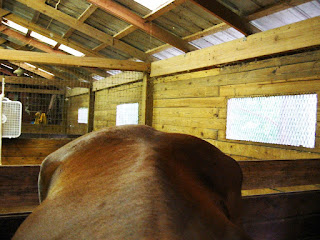Equine Strangles!!
(Figure 1)
(Figure 2)
The disease process that may cause throat latch swelling AND limb swelling is commonly known as Equine Strangles. This disease is caused by a bacteria known as Streptococcus Equi subspecies Equi. Most commonly it results in enlargement of the lymphnodes within the throat latch area that may narrow the airway of the horse, hence the term "strangles". In severe cases, a temporary tracheotomy is necessary to save the horses life! (Figure 1). These lymph nodes may rupture and drain purulent debris from the outside or from within the guttural pouches (Figure 2). These horses are typically febrile, depressed, and highly contagious! Occasionally, the horse will develop a hyper-immune response known as purpura hemorrhagica. This immune response to the bacteria results in severe swelling of one or multiple limbs (Figure 3) and can be triggered by the vaccination of a horse that was recently sick with the disease.
(Figure 4)
For more information check out the following links:











